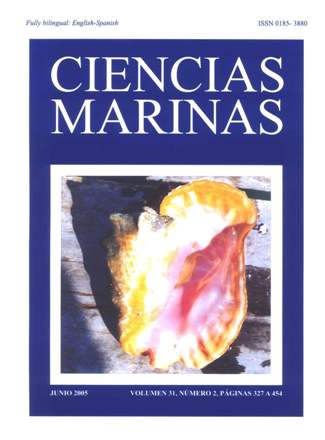Population genetics of the pink snail Strombus gigas in the Yucatan Peninsula:Implications for its management and fishery
Main Article Content
Abstract
The genetic population structure of the pink snail Strombus gigas in the Yucatan Peninsula, Mexico, was determined by isozyme expression in polyacrylamide gels. Muscle samples of 50 organisms, captured at four sites of the Yucatan Peninsula, were used to characterize the genotypic expression as revealed by the expression of 55 loci in 30 enzymatic systems. The TFPGA program was used to analyze genic frequency data. The following parameters were determined: descriptive statistics, F statistic, genetic distances, Hardy-Weinberg equilibrium, UPGMA and the number of migrants as indicator of gene flow. Heterozygosity values ranged from 0.3240 for OCTDH 2 to 0.0440 for FUM, with a mean value of 0.0366; Fis values ranged from 0.0835 for OCTDH 2 to 0.3600 for FUM, with a mean value of –0.0492; and Fst values ranged from 0.0082 for LAP 2 to 0.1967 for MDH 2, with a mean value of 0.1039, suggesting heterozygote deficiency. The number of migrants derived from the Slatkin equation is 2.156 per generation, which suggests a certain degree of variability among populations and corroborates the low values obtained for Nei´ s genetic distance, of 0.0053 for the node showing the separation of the population from Arrecife de Alacranes from the other populations. We conclude that the S. gigas populations studied here do not present genetic fragility for their subsistence.
Downloads
Article Details

This work is licensed under a Creative Commons Attribution 4.0 International License.
This is an open access article distributed under a Creative Commons Attribution 4.0 License, which allows you to share and adapt the work, as long as you give appropriate credit to the original author(s) and the source, provide a link to the Creative Commons license, and indicate if changes were made. Figures, tables and other elements in the article are included in the article’s CC BY 4.0 license, unless otherwise indicated. The journal title is protected by copyrights and not subject to this license. Full license deed can be viewed here.

